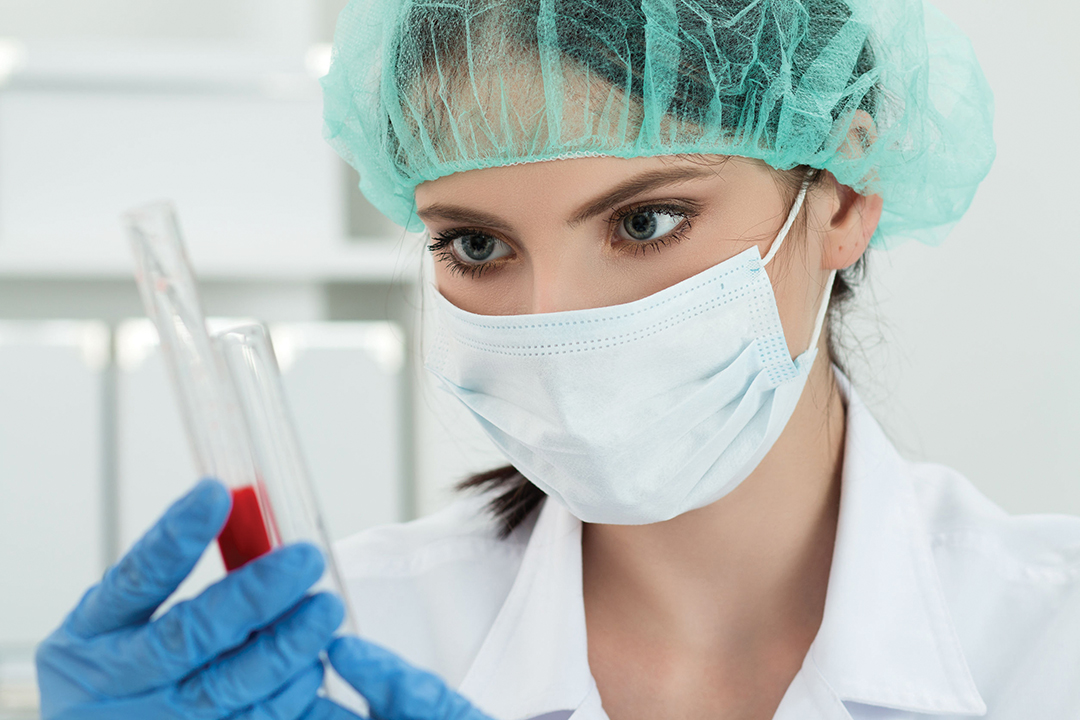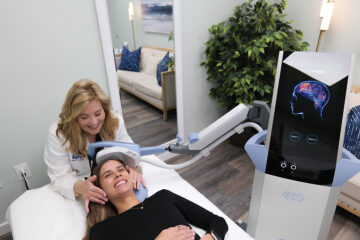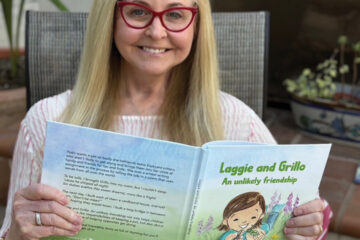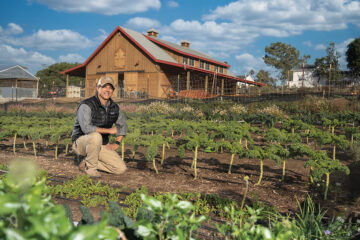San Diego County companies join the fight against the coronavirus
While local doctors and nurses fight COVID-19 on the front lines, scientists and researchers here are looking for answers.

Updated May 1, 2020
While San Diego County doctors and nurses fight COVID-19 on the front lines in hospital emergency rooms and intensive care units, scientists and researchers here are looking for answers — tests, treatments, and vaccines to combat an “invisible enemy” responsible for more than 3.1 million cases around the world, including more than 1 million in the United States. As of April 28, 2020, the death toll had topped 218,000 worldwide, with 58,000 in the U.S. There are more than 3,000 cases in San Diego County; 118 people have died. As cases and deaths from the pandemic continue to climb, there are critical problems to solve as well as signs of progress.
One of those problems is a nationwide shortage of COVID-19 tests and supplies such as masks and ventilators, as well access to tests, hampering efforts to understand the scope of the pandemic and eventually control it. How do we know how many people have the virus if we can’t test them? While the White House reports our nation’s capacity to test for the virus has increased, public health officials and politicians warn it is not enough.
San Diego County has tested more than 48,000 people so far, prioritizing who gets the tests based on guidelines from the Centers for Disease Control and Prevention. Top priority goes to hospitalized patients, workers in healthcare facilities, and those at greatest risk for complications. But the county recognizes it needs to do more. Dr. Wilma Wooten, the county’s public health officer, recently announced creation of a laboratory task force to assess capacity and expand testing.
Since mid-March, the U.S. Food and Drug Administration has issued an Emergency Use Authorization (EUA) to several county biotechnology companies in order to ramp up testing. Thermo Fisher, with facilities in Carlsbad, got the go-ahead for its TaqPath COVID-19 test, used by clinical and public health labs to quickly evaluate dozens of patient specimens. Carlsbad’s GenMark is filling a smaller niche with its own test, geared to hospitals that don’t have enough coronavirus cases to send to big, high volume labs. San Diego-based Mesa Biotech is offering its palm-sized Accula test, which is easy to use and delivers results in 30 minutes. The test is designed for point-of-care use in physician office labs, urgent care sites, long-term nursing facilities, and temporary screening facilities. “The potential to reduce the growing strain on our nation’s hospitals is tremendous,” says company co-founder Hong Cai.
Adding to testing capabilities is a new partnership between UC San Diego Health and five companies: Thermo Fisher, GenMark, Roche Diagnostics, Luminex Corp., and Abbott Diagnostics. Through this collaboration, UC San Diego’s Center for Advanced Laboratory Medicine plans to deliver up to 1,500 tests a day, compared to less than 100 in April. Patty Maysent, CEO of UC San Diego Health, calls the partnership “extraordinary, meaningful progress” that soon will provide greater access to COVID-19 testing.
Another challenge is the shortage of ventilators, life-saving equipment that takes over breathing for critically ill patients. Best known for sleep apnea devices, San Diego’s ResMed has tripled production of ventilators and scaled up ventilation mask production tenfold. “We’re working with national and state governments, health authorities, hospitals, and physicians worldwide to assess their needs and to deliver ventilation therapy that is essential to treat the respiratory complications of COVID-19,” says Mick Farrell, ResMed CEO. The company has 7,500 employees (nicknamed “Resmedians”) in more than 140 countries, including 500 in San Diego.
The World Health Organization says there are no vaccines nor specific antiviral medicines to prevent or treat COVID-19, but many are under investigation around the world. To date, there are several vaccines in human trials, including one from Inovia Pharmaceuticals, headquartered near Philadelphia, with a research lab in Sorrento Valley. The company says results from the trials involving 40 healthy volunteers from Pennsylvania and Missouri should be available by this fall. If results are promising, trials involving many more volunteers will follow. But even if a vaccine is approved, it could still take at least a year to bring it to market.
Meanwhile, San Diego-based Arcturus Therapeutics has announced plans to launch a human clinical trial this summer for a possible vaccine with up to 76 volunteers. Arcturus has teamed up with Duke-National University of Singapore Medical School to co-develop a low dose vaccine that, if successful, is “capable of vaccinating millions of people at a fraction of the cost,” according to Joseph Payne, the company’s chief executive.
Johnson & Johnson and Moderna are also working on potential vaccines. But perhaps leading the race is the Jenner Institute at Oxford University in England, which got a head start on safety trials. Scientists say a few million doses of the vaccine could be available by September if proven to be effective.
Scientists at Scripps Research in La Jolla say they have found a “possible Achilles heel” in the coronavirus, a weak spot that could be targeted with drugs and lead to the development of a vaccine. Researchers are looking for COVID-19 survivors who are willing to donate blood to be screened for antibodies that could be effective in fighting the virus. If you would like to participate, contact Scripps Research at covid19survivorstudy@scripps.edu.
Developing new drugs can be a long process, so researchers are also taking a look at known drugs, including the antiviral drug remdesivir, developed by Gilead Sciences, the Foster City-based biotech with a pharmaceutical lab in Oceanside. Results have been so encouraging that the Food and Drug Administration on May 1 granted remdesivir emergency use authorization to treat severely ill COVID-19 patients. Just a few days earlier, Dr. Anthony Fauci said that data from a large study of remdesivir showed a “clear-cut, significant, positive effect” in diminishing recovery time. Patients who got the drug were discharged from hospitals in 11 days on average compared to 15 days for patients who got a placebo. Gilead Sciences CEO Daniel O’Day says the company hopes to be able to treat up to a million patients by year’s end. Public health officials say ongoing clinical trials will determine which patients will benefit the most. UC San Diego Health, for example, has already begun clinical trials on remdesivir in conjunction with three other UC Health Centers.
Developing new drugs can be a long process, so researchers are also taking a look at known drugs. UC San Diego Health, for example, has begun clinical trials on remdesivir from Gilead Sciences, the Foster City-based biotech with a pharmaceutical lab in Oceanside. The trial is in conjunction with three other UC Health Centers. Several sources report preliminary data from trials at the University of Chicago is encouraging.
“Typically, a drug discovery effort takes five to ten years,” says Sumit Chanda, PhD, Director and Professor of the Immunity and Pathogenesis Program at Sanford Burnham Prebys Medical Discovery Institute. “So, the fastest approach to finding an effective treatment is to take existing drugs and see if they work against the current coronavirus.”
Chanda and his team have screened 12,000 drugs, already tested and proven to be safe in humans, and have found 30 that appear to be effective against COVID-19. This means that they could leapfrog to clinical trials, and perhaps save lives, while a vaccine is developed. “Many drugs identified in this study, most of which are new to the COVID-19 research community, can begin clinical trials almost immediately or in a few months after additional testing,” says Chanda, the study’s senior author.
The results of the study, which Chanda calls a “treasure trove,” identified four drugs as especially encouraging for near-term treatments and reaffirmed the promise of three drugs, including remdesivir and chloroquine derivatives now in clinical trials. But he says all 30 drugs deserve further study because they halted viral replication in the lab.
Sanford Burnham Prebys partnered with the University of Hong Kong’s Dr. Kwock-Yung Yuen, who first discovered the SARS virus, and Shuofeng Yuan, who had access to the live virus. They tested a library of existing drugs, known as the ReFRAME collection, which already have FDA approval for other diseases or have been evaluated for safety. Each was tested against the live virus, isolated from patients in China and Washington state.
The library, initially funded by the Bill and Melinda Gates Foundation, was developed by the Scripps Research Institute in La Jolla. Collaborators also include UC San Diego School of Medicine, New York’s Icahn School of Medicine at Mount Sinai, and UCLA.To flatten the COVID-19 curve here in the U.S., Chanda recommends looking at what South Korea and Singapore have done to control the disease, noting, “Both countries have enacted rigorous testing, covering a large percentage of the population, and also perform contact tracing. The strategies have allowed businesses to stay open because they’ve prevented widespread outbreaks.”
Contact tracing, a long-used public health tool, helps to control the spread of disease by tracking those who may have been exposed to a person who has tested positive. It takes time, people, and lots of money to be effective, but could help reopen the U.S. economy by enabling Americans to safely return to work. Public health officials and politicians have urged the federal government to help scale up testing.
Now that it is spring, will the coronavirus react to changes in the weather? “The field of seasonality of viruses is still fairly controversial, so I don’t think we definitely know why flu, for example, is seasonal,” says Chanda. “However, viruses are more stable in colder, drier environments. External factors such as children being in school during the winter but not in summer could play a role.”
The infectious disease expert notes that though the threat may return, medical advancements might give us the edge on history, saying, “The virus could decrease in the summer and resurge in October. If we refer back to history, the second wave of the 1918 influenza pandemic was when the majority of deaths happened. Fortunately, we have drugs and treatments in the pipeline that are better than what we had 100 years ago, but we still need to stay vigilant.”










Comments